Newfoundland is a geological wonder that is worthy of notice, if not keen observation. The island comes by its nickname ‘The Rock’ with brutal honesty. This is the southern most extremity of the ‘Canadian Shield’; a region that was completely covered in ice sheets measuring a mile and a half in thickness. Glacial ice of such sheer mass, it scraped nearly everything off the face of the land. All the plants, trees, flowers and bushes. All the freshwater species of fish, and most all the mammals, pretty much everything was swept to the sea.
Little soil remained when the climate changed again and the ice retreated, so vegetation is sparse. and the geology is exposed for easy viewing.
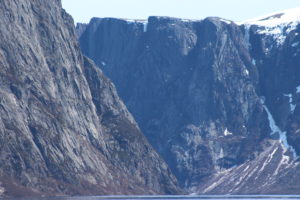
“… its nickname, The Rock…”
All you can see in Newfoundland is rock. Which is a beautiful thing, because this is no ordinary rock.
Before starting your travels, its worth taking a few moments to gain a basic understanding of Newfoundland’s geology so that you can better appreciate its beauty and magnificence. Thankfully, geology can be broken down into simple components for easy interpretation and it really helps when you are studying in an environment filled with so many extreme geological features that are easy to see and understand.
Geology doesn’t have to be complicated, and its only true challenge is our ability (or willingness) to expand the mind and think in massive temporal scales. While humans have only existed for 250,000 years, the earth is 4.5 billion years old. Time management takes on a whole new meaning in the geological world.
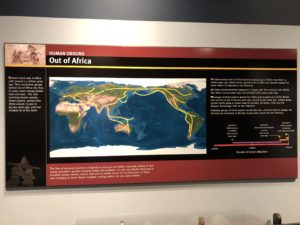
“…. geology requires massive temporal perspective…”
All rocks fall into two basic categories. ‘Igneous’ rocks are formed when lava erupts from within the earth’s mantle to form new land. Lands that grow larger and larger, eventually becoming islands, and with enough time, continents. These rocks are further characterized by their mineral content, and more importantly, how they cool. ‘Extrusive’ igneous rocks cool at the earth’s surface, while ‘Intrusive’ igneous material cools at a much slower pace, deep within the bowls of the earth.
Sedimentary rocks compose the second major classification of study. These rocks are composed of eroded igneous materials that become suspended in rapidly moving water, carried along until the water slows, and deposits these silts, sands, and small pebbles in layers that eventually become cemented or pressed into a bonded mass of striped material known as sedimentary rocks.
A third classification is also worth noting, when sedimentary and igneous rocks are subjected to extreme geological temperatures and pressure, they can bend, warp and melt, taking on completely new characteristics which we then classify as ‘Metamorphic’ Rocks.
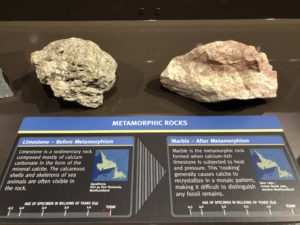
“… bend, warp, and melt…”
That’s really all you need to know to get started – well that and several important geological theories for which we find undisputable proof in Newfoundland.
The most significant of these is the relatively new theory of ‘Plate Tectonic Movement’. Canadian geologist Tuzo Wilson’s work in Newfoundland proved that our continents are not stationary, and are in fact, constantly moving; albeit at a very slow pace that is best likened to the growth of your fingernails.
Lava convections within the earth’s core create massive energy flows that carry our continents about the globe. As the continents drift slowly across the earth’s mantle, they tend to gravitate towards each other, and at one period in the world’s history all the continents collided; crushing, thrusting, folding and riding over each other to form a super continent called ‘Pangea’.
Newfoundland would have been located at the epicenter of this impact zone, so when the energy finally dissipated and the continents drifted back to take up the positions we now recognize, Newfoundland was left sitting in the middle of the Atlantic Ocean boasting significant geological sections that were once a part of Africa, Europe and North America.
Well, rock from the original continents that formed Pangea anyway. All the land from the eastern most tip of Cape Spear to the Dover Fault was once a part of ‘Gondwana’ (most of which is now recognized as Africa). The entire west coast of Newfoundland as far as Baie Verte is composed of rock shared with the ancient continent of Laurentia – now North America. And the mid section of our province exhibits much of the same mineral composition as the oceanic plates and European plains.
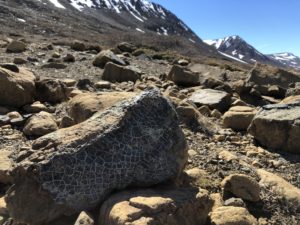
And the list goes on. Newfoundland is one of the only places where you can walk on the earth’s mantle. The rocks at ‘Mistaken Point’ contain fossilized remains of the earliest multicell creatures found on the planet. Labrador bears geological evidence of changing sea levels, permanently etched into the coastal cliffs during the past 7000 years of “Rebound” – water levels don’t rise when ice melts, the land rises once relieved of its glacial burden. Ice is heavy.
Icebergs drift by our coast each spring, reminding us of the glacial activity that laid Newfoundland barren during the last period of significant global cooling. The province’s rich mineral deposits support several mines which supply valuable resources for our developing world. And Newfoundland’s massive oil fields help fuel the global demand for energy.
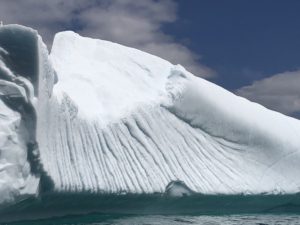
“Icebergs drift by our coast…”
Newfoundland is a ‘Geological Time Capsule’ that provides a wonderful perspective on our role in the modern world, the environment surrounding us, and the need to embrace and appreciate the many beauties and bounty it provides.
Now that’s something worth rocking about.


